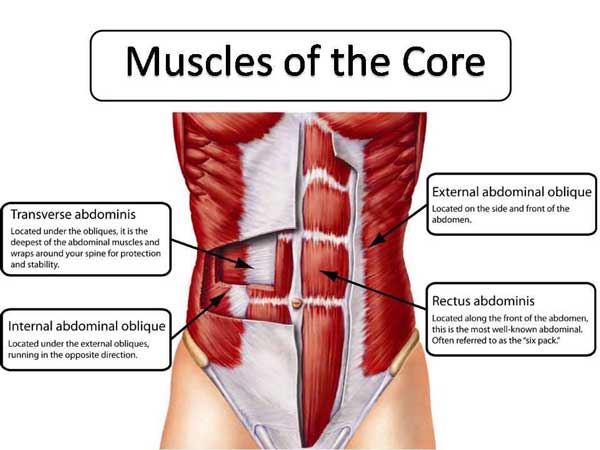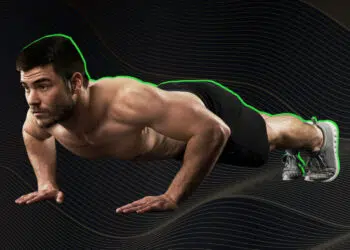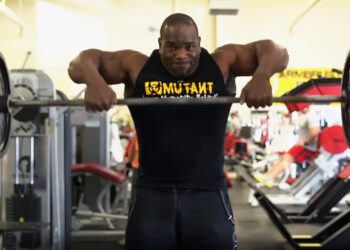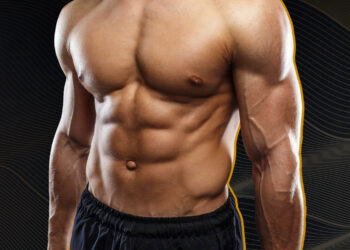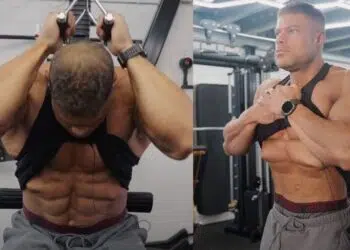Planks are one of the most popular core exercises on the planet. Not so long ago, if you wanted to work your abs, you did crunches and sit-ups. However, those exercises gradually fell out of favor, and the plank took over.
This history of planks is long and storied, and there are examples of planks in yoga, Pilates, and other traditional workout methods.
Fast forward to the 21st century, and now there are online plank challenges, plank workout apps, and competitive planking is a thing. Did you know that the Guinness World Record for holding a continuous plank is a staggering 9 ½ hours!
While planks are undoubtedly an effective exercise, some people find them boring. After all, planks are an isometric exercise, meaning you contract your muscles without moving. So, instead of planking for reps, you just maintain your position for longer and longer durations.
Getting good at planks means you could be doing them for several minutes at a time, which is neither efficient nor very interesting. It’s no wonder that planks can seem dull.
The good news is that you don’t have to limit your core workouts to the same old static plank. There are several variations and alternatives you can use to make your training more time-efficient and interesting.
Level Up Your Fitness: Join our 💪 strong community in Fitness Volt Newsletter. Get daily inspiration, expert-backed workouts, nutrition tips, the latest in strength sports, and the support you need to reach your goals. Subscribe for free!
In this article, we take a look at rocking planks, explaining why and how to do this great bodyweight core exercise.
Rocking Plank – Muscles Worked
Rocking planks are a core exercise, and core is the collective term for the muscles of your midsection. However, they also involve several other muscles. The main muscles developed by rocking planks are:
Rectus abdominis
The rectus abdominis is the long, flat muscle on the front of your abdomen. Its functions are flexion and lateral flexion of your spine. It’s also involved in the compression of the abdominal contents. During rocking planks, the rectus abdominis works to stop your lumbar spine from extending.
Transverse abdominis
Where the rectus abdominis runs vertically up your abdomen, the transverse abdominis runs around it horizontally. Known as the TVA for short, this weightlifting belt-like muscle encircles your midsection and, when it contracts, squeezes inward to create intra-abdominal pressure (IAP). IAP supports your lumbar spine and prevents unwanted movement.
Obliques
The obliques are basically your waist muscles. There are two sets of oblique muscles – internal and external – which work together to rotate and laterally flex your spine. The obliques act as stabilizers during rocking planks, preventing any unwanted side-to-side movement.
Erector spinae
The erector spinae are the muscles of your lower back that work to prevent unwanted movement during rocking planks. However, if you do rocking planks correctly, you should not be able to feel these muscles working.
Quadratus lumborum
Known as the QL for short, these muscles lie beneath your obliques and are involved in lateral flexion and stabilization of your lumbar spine. While you can’t see your QL muscles, you may feel them working during rocking planks.
Deltoids
While rocking planks are undeniably a core exercise, your upper body will also get a workout. The rocking motion hits your deltoids, which are your shoulder muscles.
Done correctly, rocking planks involve many other muscles and muscle groups, including your quadriceps, calves, lats, and glutes. However, these muscles aren’t working particularly hard, so they won’t get much benefit from this exercise.
How to Do Rocking Planks
Get more from rocking planks while keeping your risk of injury to a minimum by following these guidelines:
- Kneel down and place your forearms on the floor. Brace your core and pull your shoulders down and back.
- Walk your feet back so your body is straight. Your shoulders should be over your elbows.
- Point your toes and shift your weight forward, lowering your shoulders down toward your hands.
- Push back with your arms and return to your starting position.
- Continue for the desired number of reps.
Pro Tips:
- Place your elbows on a folded exercise mat or foam pad for comfort.
- Keep your core braced but do not hold your breath during this exercise.
- Keep your forearms parallel or clasp your hands together as preferred.
- Make this exercise harder by wearing a weighted vest.
- The larger your movements, the more demanding this exercise becomes. Adjust your range of motion based on your core strength.
Rocking Plank Benefits and Drawbacks
Not sure if rocking planks deserve a place in your workouts? Consider these benefits and then decide!
No equipment required
Rocking planks are an excuse-free exercise that you can do anywhere and anytime. With no equipment required, you can do this exercise at home, in your hotel room, or anywhere else you have enough space to lie down.
Count reps instead of time
No watch or timer app? No problem! Instead of working your core for a fixed duration with stationary planks, rocking planks are done for reps. Do sets of straight reps, and don’t worry about how long you’ve been planking for.
More challenging than regular planks
Rocking planks increase the length of your support base, making them more challenging than stationary planks. However, because they’re done for reps, the tension on your muscles is not constant. In this way, rocking planks are more like an isotonic than an isometric exercise.
While rocking planks are a mostly beneficial exercise, there are also a few drawbacks to consider:
Increased shoulder stress
Rocking planks are a core exercise, but you’ll also be working your shoulders. Depending on how far you shift your weight forward, this could put undue stress on your shoulder joints. Perform this exercise with caution if you have a history of shoulder pain.
Increased lower back stress
Planks are perfectly safe if you maintain a neutral (slightly arched) spine. However, if you hyperextend your spine, you could experience back pain. Because rocking planks are more demanding than regular planks, you may find your core muscles fatigue faster, making it harder to maintain a neutral spine. Brace your core muscles hard to prevent this problem.
7 Rocking Plank Variations and Alternatives
Rocking planks are a highly effective core exercise, but that doesn’t mean you need to do them all the time. There are several variations and alternatives you can use to keep your workouts productive and interesting:
1. Body saw
While rocking planks are undeniably harder than stationary planks, your range of motion is limited by your ankle mobility. With body saws, you are free to move further, putting more tension on the target muscles. This exercise is significantly more intense than rocking planks, so proceed with caution!
Level Up Your Fitness: Join our 💪 strong community in Fitness Volt Newsletter. Get daily inspiration, expert-backed workouts, nutrition tips, the latest in strength sports, and the support you need to reach your goals. Subscribe for free!
Steps:
- Adopt the plank position with your feet resting on a gym towel or sliding discs. Alternatively, you can take your shoes off and do this exercise in your socks. Brace your core.
- Push yourself backward and slide your feet away from your arms. Do not allow your lower back to hyperextend.
- Pull yourself forward again and repeat.
Muscles Targeted:
- Primary: Core.
- Secondary: Deltoids, latissimus dorsi.
Benefits:
- A low-tech but high-effect bodyweight core exercise.
- More strenuous than rocking planks, so suitable for more experienced exercisers.
- Do this exercise anywhere you have a smooth surface to slide on.
Tips:
- Do this exercise from the push-up position for a more intense workout.
- Adjust your range of motion according to your core strength. The further you slide your feet, the harder the exercise becomes.
- You can also do this exercise with your feet in a suspension trainer:
2. Stability ball stir the pot
Rocking planks primarily work your rectus abdominus. While your obliques are involved, they mostly work in a supporting role. With the stability ball stir-the-pot exercise, the obliques get promoted and have much more work to do.
Steps:
- Place a stability ball on the floor and kneel behind it. Place your forearms on the ball and then walk your feet out and back into the plank position. Brace your core.
- Keeping your body straight, make circles with your arms. Go clockwise and counterclockwise.
- Continue for the desired number of reps and then rest.
Muscles Targeted:
- Primary: Core.
- Secondary: Deltoids.
Benefits:
- The obliques get more of a workout.
- More demanding than rocking planks.
- A functional and effective core exercise.
Tips:
- Dust your forearms with lifting chalk to stop them from sliding off the ball.
- Bend your legs and rest on your knees to make this exercise easier.
- Raise your feet to make this exercise more challenging:
3. Ab wheel rollouts
Rocking planks increase the length of your support base, but not by much. Once you are strong enough to do a dozen or so rocking planks in good form, you should be ready for a new challenge. Ab wheel rollouts are an excellent option and one of the best anterior core exercises you can do.
Steps:
- Kneel down and place your ab wheel in front of your knees. Brace your core and straighten your arms.
- Without hyperextending your lumbar spine, push the wheel away from you and lower your chest toward the floor. Go as far as you can without losing your neutral spine.
- Pull the wheel back into your knees and then repeat.
Muscles Targeted:
- Primary: Core.
- Secondary: Deltoids, latissimus dorsi.
Benefits:
- A challenging movement for more experienced exercisers.
- Low-tech but high-effect.
- Ab wheels are cheap and readily available.
Tips:
- No ab wheel? You can also do this exercise with a barbell.
- Wear a weighted vest to make this exercise harder.
- Progress to doing this exercise from standing:
4. Walkouts
Walkouts are like ab wheel rollouts, but you don’t need any equipment to do them. They work the same muscles as rocking planks, but the distance between your feet and hands is greater, so they’re a little more challenging. Kick your core workout up a level with walkouts.
Steps:
- Stand with your feet together, arms by your sides. Brace your abs.
- Hinging from your hips, lean forward and place your hands on the floor.
- Taking small steps, walk your hands forward as far as you can while maintaining a neutral spine.
- Hold the extended position for a couple of seconds.
- Without relaxing your core, walk your hands back toward your feet and stand up.
- Continue for the required number of reps.
Muscles Targeted:
- Primary: Core.
- Secondary: Deltoids, triceps.
Benefits:
- A very challenging bodyweight core move that’s ideal for more experienced exercisers.
- No equipment required, so ideal for home workouts.
- A significant step up from rocking planks.
Tips:
- Stop your set if you cannot maintain core stability or start to feel this exercise in your lower back more than your abs.
- The further you walk your hands beyond your shoulders, the harder this exercise becomes.
- You can also do this exercise from kneeling.
5. Inchworm
Inch worms are very similar to walkouts. However, instead of walking your hands backward to return to the standing position, you move your feet forward to meet your hands. This makes inchworms ideal for outdoor workouts or when training in spacious gyms.
Steps:
- Stand with your feet together, core braced, and arms by your sides.
- Hinging from your hips, lean forward and place your hands on the floor.
- Walk your hands forward as far as you can while maintaining your core stability.
- Still bracing, and bending your knees as little as possible, walk your feet up to your hands.
- Without standing up, start walking your hands forward into another rep.
Muscles Targeted:
- Primary: Core.
- Secondary: Deltoids, triceps.
Benefits:
- A challenging bodyweight-only core exercise that’s ideal for more experienced exercisers.
- Good for developing coordination and hip mobility.
- An excellent exercise for circuit training and other metabolic conditioning workouts.
Tips:
- Walk your hands as far forward as you wish. The further your hands are from your feet, the harder this exercise becomes.
- Take care not to move your hands so far forward that you feel this exercise in your lower back.
- Bend your knees as you lean forward if your hamstrings are tight.
6. High bird dog
Bird dogs are so-called because, when you do them, you look a little like a hunting dog pointing at its fallen prey. Regular bird dogs are performed from kneeling and are a great exercise for beginners. However, the high bird dog is much more challenging and an excellent core strengthener for more experienced exercisers.
Steps:
- Adopt the push-up with your arms, legs, and body straight. Brace your core.
- Keeping your hips and shoulders level, lift your left hand and right foot so they are roughly parallel to the ground.
- Hold this position for 3-5 seconds.
- Lower your arm and leg, and then repeat on the opposite side.
- Continue alternating sides for the duration of your set.
Muscles Targeted:
- Primary: Core.
- Secondary: Deltoids, triceps.
Benefits:
- A very challenging bodyweight core exercise.
- Increased oblique engagement.
- A good exercise for developing better balance.
Tips:
- Take care not to hyperextend your lumbar spine, as doing so could cause lower back pain and injury.
- Make this exercise harder by moving your arms forward to extend your base of support.
- You can also do this exercise with your legs bent and knees hovering a few inches off the floor, which is called the bear plank bird dog:
7. Kneeling overhead Pallof press
The horizontal Pallof press is a proven core anti-rotation exercise. However, the overhead version is more similar to rocking planks. Because weights are involved, you can easily make this exercise harder or easier according to your needs and goals. However, you should start with a light load because this exercise is harder than it looks.
Steps:
- Attach a rope handle to a pulley machine set to about waist height.
- Core braced, kneel with your back to the pulley and hold one end of the rope handle in each hand at shoulder level.
- Keeping your torso upright, extend your arms overhead.
- Lower the handles back to your shoulders and repeat.
Muscles Targeted:
- Primary: Core.
- Secondary: Deltoids, triceps.
Benefits:
- Infinitely scalable by adjusting the weight.
- An excellent exercise for all levels of fitness.
- Easier to progress/regress than most bodyweight core exercises.
Tips:
- Kneel on a folded exercise mat or foam pad for comfort.
- This exercise can also be done standing, making it more challenging, but it may also increase lower back stress.
- You can also do this exercise with a resistance band:
Rocking Plank FAQs
Do you have a question about rocking planks or core training in general? No problem, because we’ve got the answers!
1. Will rocking planks give me six-pack abs?
While rocking planks will undoubtedly strengthen your rectus abdominis or six-pack muscle, they won’t necessarily give you a visible six-pack. Getting a six-pack involves lowering your body fat percentage so the outline of your abs shows through. For men, this usually means getting your body fat down to ten percent or less. Women typically need to hit 15% or lower.
As such, you’ll need to pay equal attention to your diet and your workouts if you want to get a six-pack.
Read more about training and eating for six-pack abs here.
2. Rocking planks hurt my lower back – what gives?
While rocking planks are generally safe, they could cause back pain if you let your hips drop or hyperextend your lumbar spine. Keeping your core brace will help prevent this problem, as will paying attention to your form.
However, if you still experience discomfort and pain during this exercise, it could be that your core muscles are too weak to fully support your lower back. In this case, choose a less demanding exercise, such as regular planks, and use them to build up your strength until you’re ready to try rocking planks again.
Either way, do not ignore pain, as it’s your body’s way of telling you something is wrong. Working through pain invariably makes things worse.
3. Should I train my abs every day?
While training your abs every day might be tempting, it’s probably not a good idea. Exercises like rocking planks cause micro trauma to your core muscles, which is the trigger for them to get stronger. However, the rebuilding process takes time, so you need to let your muscles to rest and recover so this can occur.
So, it’s generally best to limit your abs workouts to 2-3 times per week. This provides a good balance between work and rest. Training your abs every day could result in overtraining and inhibit rather than speed up your progress.
4. How many reps and sets of rocking planks should I do?
The answer to this question is, how many reps CAN you do? Because rocking planks are a bodyweight exercise, their difficulty depends on things like your weight and limb length, so some people will find them harder than others.
So, it’s up to you to determine how many reps to do. Perform the exercise until you feel the target muscles starting to fatigue. Then, over the coming weeks, gradually try to do more reps.
Regarding sets, 2-4 should be sufficient for most exercisers. If you feel you need to do more than four sets, you are either not working hard enough or are resting too long between sets. Try to fatigue your muscles in three sets to make your workouts more time-efficient.
5. Are rocking planks safe?
Performed correctly, rocking planks are a relatively safe exercise. Unlike crunches and sit-ups, they involve no significant movement of your spine, so they’re very lower back-friendly. However, if you lose core stability and hyperextend your lumbar spine, rocking planks could cause injury.
That said, if your technique is good and you stop your set before your form begins to deteriorate, rocking planks should be no more dangerous than regular planks.
Rocking Plank Guide – Wrapping Up
There is no denying the popularity and effectiveness of regular planks. They’re simple, accessible, and safe. That said, like most exercises, if you do them too often, planks can soon become boring and lose some of their benefits.
While you could just plank for longer, you’ll probably get better results from your workouts if you use some different exercises in your core workouts.
Rocking planks are a logical progression from regular planks and a simple way to take your core workouts to a new level.
Try them – you’re going to like them!
Interested in measuring your progress? Check out our strength standards for Sit Ups, Ab Wheel Rollout, Crunches.

